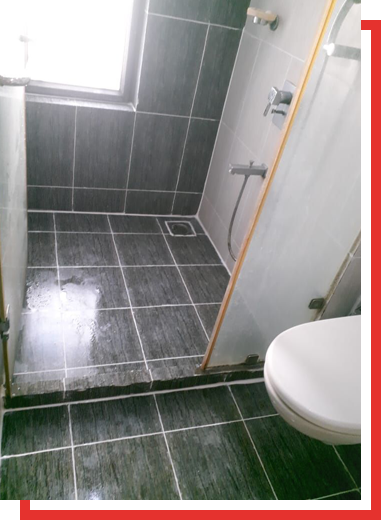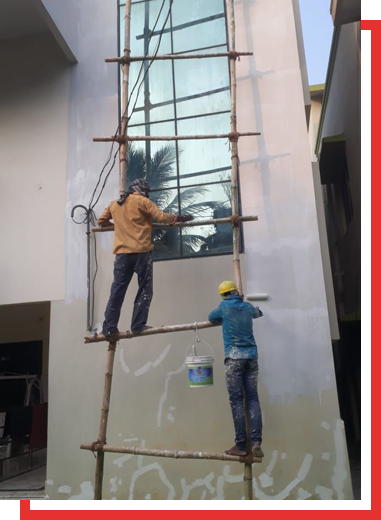Terrace/Roof Waterproofing
Many homeowners today experience leakage and seepage in their roofs. The main causes of roof seepage are; improper slopes clogged pipes and cracks and damage to the roof. They hold the water in the cracks or where the slopes are not thoroughly done and then that water penetrates the roof slowly causing leakage. A terrace made up of tiles or chine chips has numerous joints and if the joints are not filled properly, they lead to water leakage. A waterproofing treatment is needed to get rid of this issue.
Waterproofing treatment can be done on the newly constructed roof as well. It will enhance the life and durability of the roof.
Steps for waterproofing the existing terrace
- Surface preparation
Surface preparation is the initial step to making the terrace ready for the waterproofing treatment. Most of the existing terraces have algae/fungus, oil, or grease and they need to be removed first. Our experts use a pressure washer to remove them. - Sealing the outlets and projections
In this step, the rainwater outlet and other open holes get sealed using proper material to ensure, no liquid or water is getting into the pipes during the waterproofing treatment. - Applying primer
Primer is just like the bonding agent that helps to stick the coating and the surface. It ensures better adhesion and enhances the durability of the applied coating over it. Additionally, it provides additional protection to the surface. - Applying base coat
Applying base coast is crucial in this process. It mainly creates a foundation for the coating that absorbs any type of movement shocks that may be created either by surface or by any external movement. - Applying reinforcement
Adding reinforcement in this procedure means adding life to the entire coating system. It helps to enhance the durability and validity of the coat. - Intermediate coat
Intermediate coats serve different objectives including better insulation and isolation of the system. It also helps to protect the coating system from the adverse condition. - Applying topcoat
Topcoat mainly applies on the top of all these layers. It is packed with several properties including anti-abrasive, UV stable, anti-static, solar reflective, and aesthetically appealing.
Advantages of roof/terrace waterproofing
- Improves the durability of the roof
- Reduces the potential risk of roof damage due to seepage
- Keeps the rooms cool by reflecting the sunray
- Prevents any possibility of health issues caused due to the growth of mold and mildew
- Increases the quality and life of interior color and furniture attached to walls and roof






